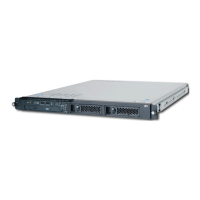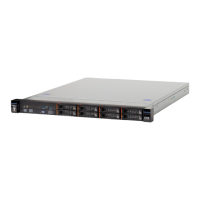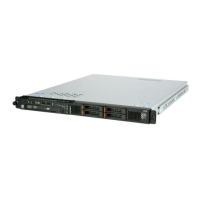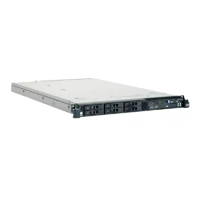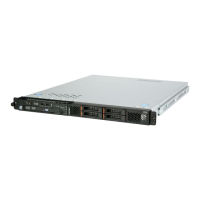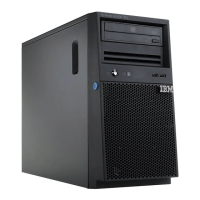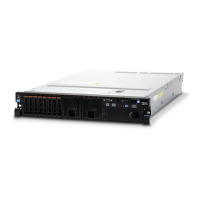There is one keyboard connector on the back of the server. Use this connector to
connect the server to a keyboard or optional console switch. You can also connect
a USB keyboard to the server by using one of the USB connectors. After you install
a USB keyboard, you might have to use the Configuration/Setup Utility program to
enable keyboardless operation and prevent the POST error message 301 from
being displayed during startup. For information about how to connect a USB
keyboard to the server, see the documentation that comes with the keyboard. If the
server cables and connector panel have color-coded connectors, match the color of
each cable end with the color of the connector. For example, match a blue cable
end to a blue connector on the panel, a red cable end to a red connector, and so
on.
Updating the server configuration
When you start the server for the first time after you add or remove an internal
optional device or external SAS device, you might receive a message that the
configuration has changed. The Configuration/Setup Utility program starts
automatically so that you can save the new configuration settings. For more
information, see Chapter 3, “Configuring the server,” on page 35.
Some optional devices have device drivers that you must install. For information
about installing device drivers, see the documentation that comes with each device.
If the server has a RAID configuration that uses the SAS/SATA controller with
integrated RAID (hot-swap SATA or SAS models only) and you have installed or
removed a hard disk drive, you might have to reconfigure the disk arrays.
If the server has an optional RAID adapter and you have installed or removed a
hard disk drive, see the documentation that comes with the RAID adapter for
information about reconfiguring the disk arrays.
For information about configuring an integrated Gigabit Ethernet controller, see
“Configuring the Gigabit Ethernet controllers” on page 47.
34 IBM System x3250 Types 4364 and 4365: User’s Guide
